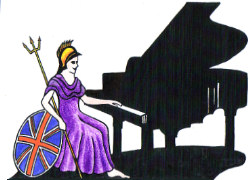Teachers, Accompanists and Piano Entertainers in the UK

UK Piano Page

Lenton Boulevard
Nottinghamshire NG7 2BY
England
Over many years, we have carefully selected what
95 Strongbow Crescent
Eltham, London SE9 1DW
England
Piano Removals Services for all of Greater London
3 - 4 Chelsea House
Festival Place
Basingstoke, Hampshire RG21 7JR
England
Kingston upon Thames, London KT1
England
London Borough of Kingston Piano Moving , Piano
Richmond upon Thames, London TW9
England
London Borough of Richmond Piano Moving and piano
Music Festival for performers and guests Our 10th
18-06-2022 12:30PM
The Morecambe Bay Piano Group was set up to extend
11-12-2021 01:00PM
The Morecambe Bay Piano Group was set up to extend
08-01-2022 01:00PM
The Morecambe Bay Piano Group was set up to extend
12-02-2022 01:00PM